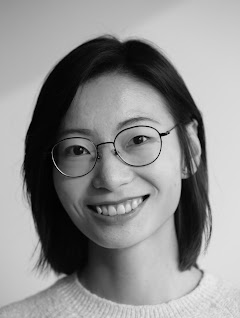Beat
I cover economic and political news, and also shoot daily life pictures and human interest stories. China’s younger generation and their way of life intrigue me the most.
One Shot

“I was cycling on Beijing’s empty streets in April, looking for small businesses that had closed or been affected due to COVID-19. I passed a roast duck restaurant and was drawn by the placards on its windows. When I walked in, chairs were stacked on tables, dust was floating in the air, and the owner and his relatives were sitting together, idly browsing their phones. A sliver of weakening sunlight slipped through the window, brightening part of their faces. Everything else was shrouded in shadow. Immediately, I felt this was an establishing shot I shouldn’t miss. These people had been out of business for months, as hopeless and as aimless as the dust in the air. Though not direct casualties of the pandemic, they bore the brunt of the outbreak’s collateral damage. And they were the flesh and blood behind the dismal economic numbers.”
Profile
My father was passionate about photography, even at a time when there wasn’t a huge selection of cameras available. He used to carry a Minolta film camera everywhere he went. When he had the films developed, I would be fascinated by the negatives, looking at them under the light and comparing them to the printed photos. When I was in university, he gave me his DSLR camera, and told me to shoot pictures in the manual mode, to learn about the relation between light, aperture and shutter speed. My interest in photography was sparked then. I later went to London to study documentary photography and photojournalism.
For my first assignment, I documented university graduates from outside Beijing trying to settle in China’s capital. It was not a big story, but these people represented a large group of young dream-seekers. The challenge was the tight schedule—I had very little time to find and photograph subjects before the newspaper I was working for at the time went to print. I managed to find a mover who let me jump onto a driver’s truck and follow him helping graduates move house for two days, as I tried to get these young people to allow me to document them. I learned a lot about gaining access and communicating with subjects, which was relatively hard as not everyone was keen on revealing their struggles for fear of how they would be viewed by their friends and family. I also learned to always be grateful for those willing to trust me and have their photograph taken.
A 30-day trip retracing a major route taken by Chinese Communist Party soldiers during the Long March was the assignment that had the biggest impact on me. It was the 80th anniversary of the march, a 2-year military retreat by tens of thousands of soldiers to evade the pursuing Nationalist Kuomintang army, through mostly mountainous areas stretching 6,000 miles (9,565 km) from south to north. The trip offered me, a Beijing local, a rare chance to dig into China’s great hinterland. We visited some poor and isolated villages and talked with many people from all walks of life. I realised Beijing and Shanghai were the faces of the country, but not the spine. That trip put a seed in me to always keep my eye on the people living in rural areas or smaller cities.
I genuinely respect every photographer who is still passionate and active about telling stories with images, either in journalism or via documentaries. It’s not easy holding onto something for a long time when constantly assailed by challenges brought about by irreversible developments in technology.
On my photography journey, I have been influenced most by Diane Arbus, the first female photographer whose work I encountered. She documented a lot of marginalised people and the intimacy and trust those people had in her emanate from her pictures. She usually established strong personal relationships with her subjects and photographed some of them over many years.
The power of the still image still exists, regardless of ever-louder voices insisting it will disappear in the era of high-definition video. I am always amazed that a single or a series of pictures can deliver so much information, including emotion that resonates with viewers. Distinct from video or text, a photograph harbours the unique magic of intertwining the complexity of information with the aesthetic of art in one frame. I believe photography will last as long as there are people still fascinated by function and magic, like me.
Behind the Scenes

